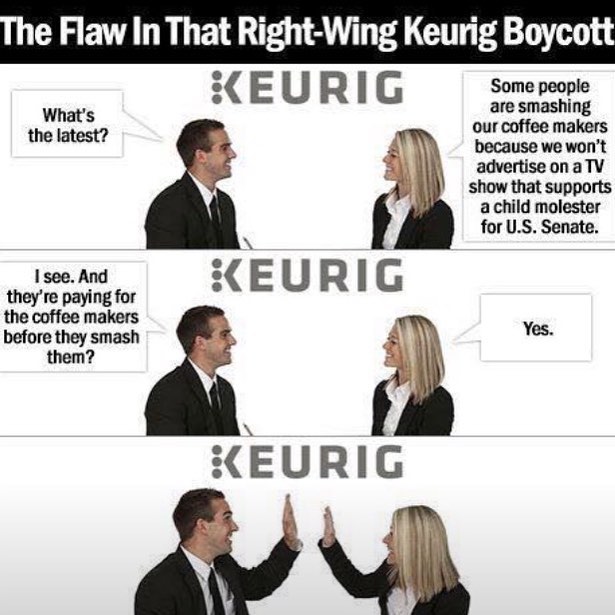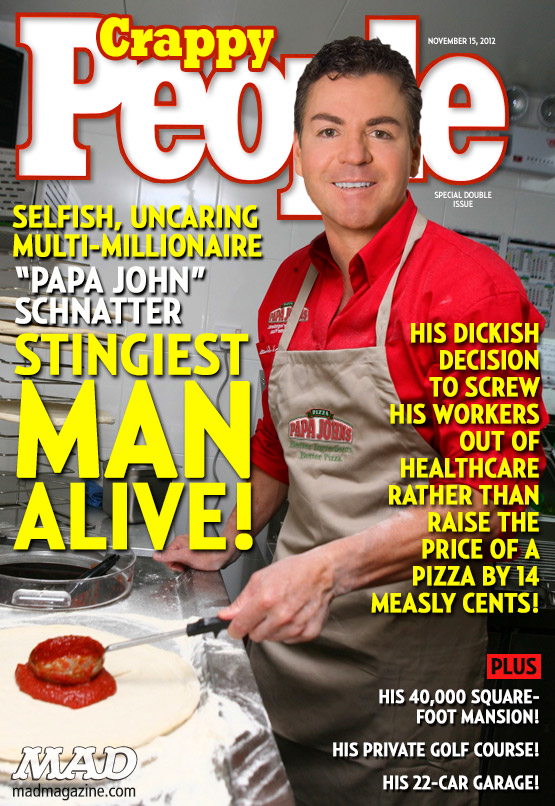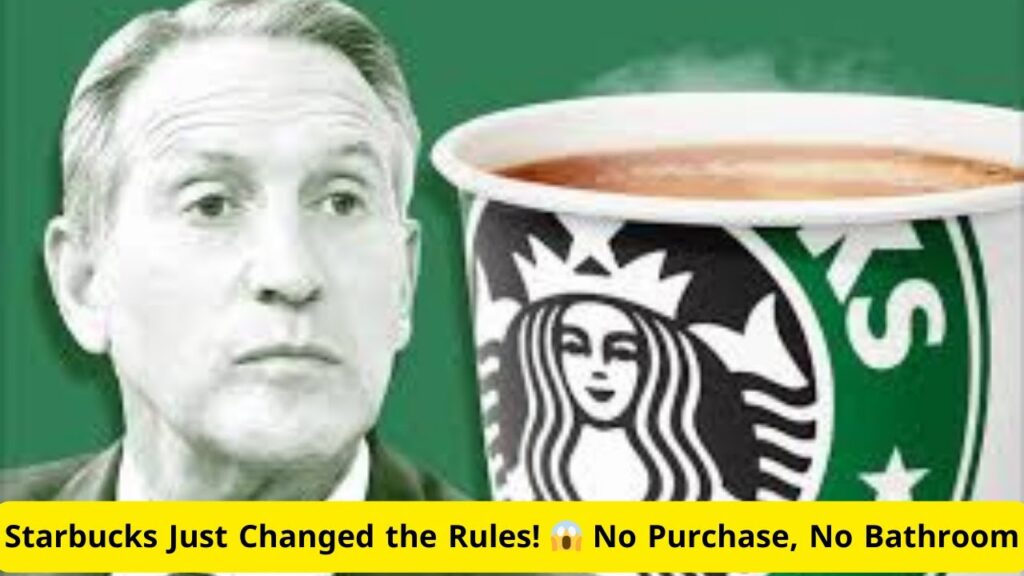 I try to stay away from politics when I write about marketing. The key words being, “I try.” Conventional wisdom would dictate that we avoid controversy in our marketing work, unless, of course, we are advocating on behalf of a candidate or cause.
I try to stay away from politics when I write about marketing. The key words being, “I try.” Conventional wisdom would dictate that we avoid controversy in our marketing work, unless, of course, we are advocating on behalf of a candidate or cause.
An article in the New York Times yesterday, Pizza Is Partisan, and Advertisers Are Still Adjusting, addresses how difficult this is in the digital age. People are destroying their Keurig Coffee Makers because the company pulled its ads from Sean Hannity’s show.

There’s a movement to boycott Jim Beam, and a counter movement to support the brand, because spokesperson Mila Kunis announced donations to Planned Parenthood in Mike Pence’s name. And then there’s Papa John Schnatter, who had to renounce support of white supremacists and apologize for appearing divisive after publically stating that the NFL’s handling of the national anthem controversy had hurt its pizza sales.
Well, we all know about Papa John, who famously said that, “We’re not supportive of Obamacare, like most businesses in our industry…If Obamacare is in fact not repealed, we will find tactics to shallow out any Obamacare costs and core strategies to pass that cost onto consumers in order to protect our shareholders’ best interests.”
All that because he’d have to pass on a 14-cent price increase on a large pizza onto the consumer.

It’s tough to stay out of politics these days. Anytime I mention the word “environment” or preface any word with “eco” in focus groups, respondents in red states go nuts. The context could be “saving your front lawn” or “keeping your kids from being poisoned.” It doesn’t matter. Our world is so polarized that the mere mention of words associated with the other party is toxic.
It’s not a good idea to invite trouble – as I’m sure I did a few paragraphs back. But the most important attribute for brands today, the cost of entry to be considered, especially with younger consumers, is authenticity.
One of the first things I do when people come to work for me is to draw a big circle on an easel pad to represent the world of our prospects. Then I draw a wedge representing about 60% of the pie. “These are the people who will never get me,” I explain. “It is unlikely that they every become clients, and if they do, it probably won’t go well.” Next, I add a slice representing about 30% of the total. They may or may not get me, but there is a very good chance that they will come to embrace our way of thinking when they see the results of the work. Finally, there’s a 10% sliver of those who “really get Jeff.” That’s our target, and there are plenty of them around to help our business flourish. It’s just a matter of finding them and letting them know who we are.
Most mainstream brands, a toothpaste or a laundry detergent for example, need more than 10% of potential consumers to “get them.” Most, by their nature, are unremarkable and interchangeable, hence their ability to appeal to a wide range of consumers. However, these are the brands that are hurting most these days, trapped in the graveyard of those middle supermarket aisles. According to Fortune, the 25 biggest food and beverage companies have lost the equivalent of $18 billion in market share since 2009.
Meanwhile, fresh, organic, locally sourced, specialty brands are on the rise.
One major distinction between these types of brands is authenticity. And part of authenticity is standing for something.
While I am obsessed with empathy and understanding lately, desperately trying to keep my mind open to ideas from outside my bubble, I don’t believe the implication is that I should surrender all my beliefs and values. Yes, I will surely alienate some potential clients, but understanding who I am, and being entirely truthful and transparent about it, will strengthen my relationships with the 10%-30% that really matter to me.
And so it should be for all brands. Fear-based, defensive marketing tactics that take the teeth out of your brand personality won’t strengthen your brand. You’ll just wind up in “the middle,” a place you really don’t want to be in today’s marketing world, physically (as in the supermarket) or metaphorically.
Put your stake in the ground in a sane, respectful way that is consistent with the values of most of your customers. Make sure your brand actually stands for something. Take your lumps, but deepen relationships with those who are open to you. No one will rally behind you – on a personal or branding level – if you choose to be wishy-washy.



